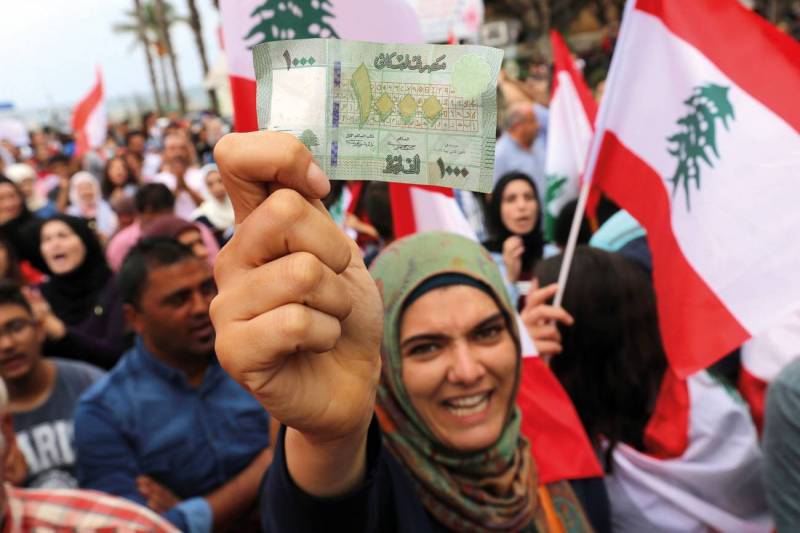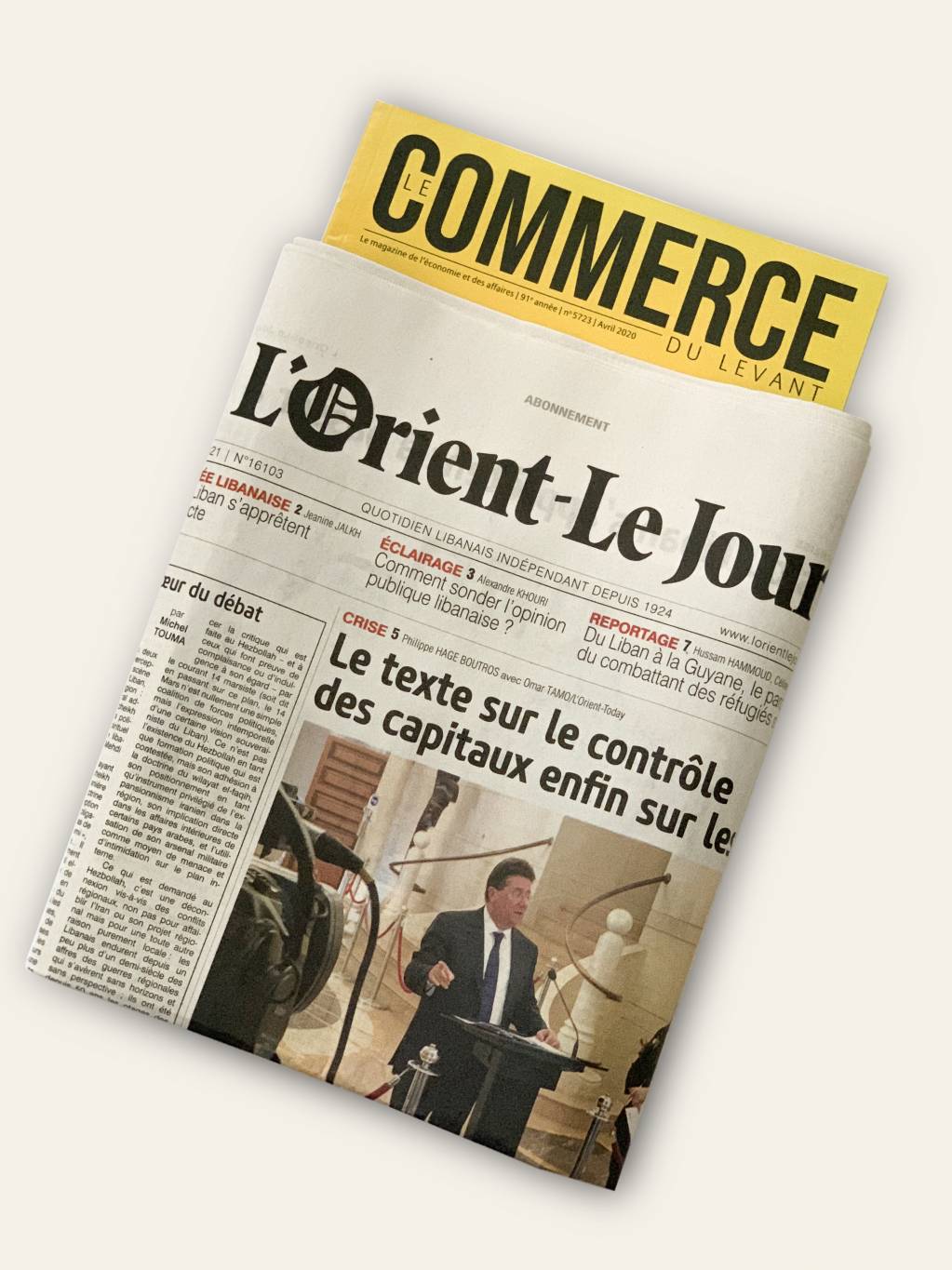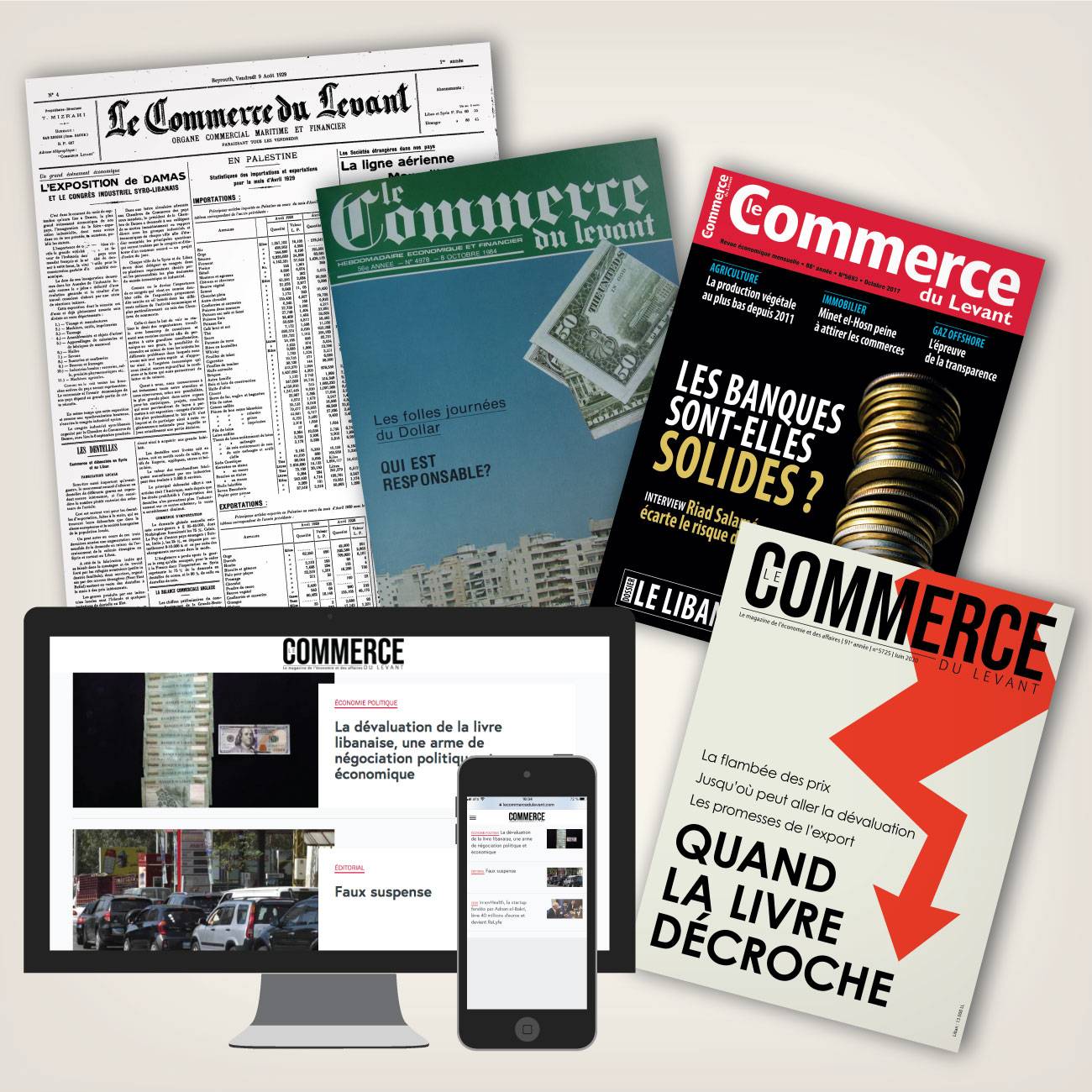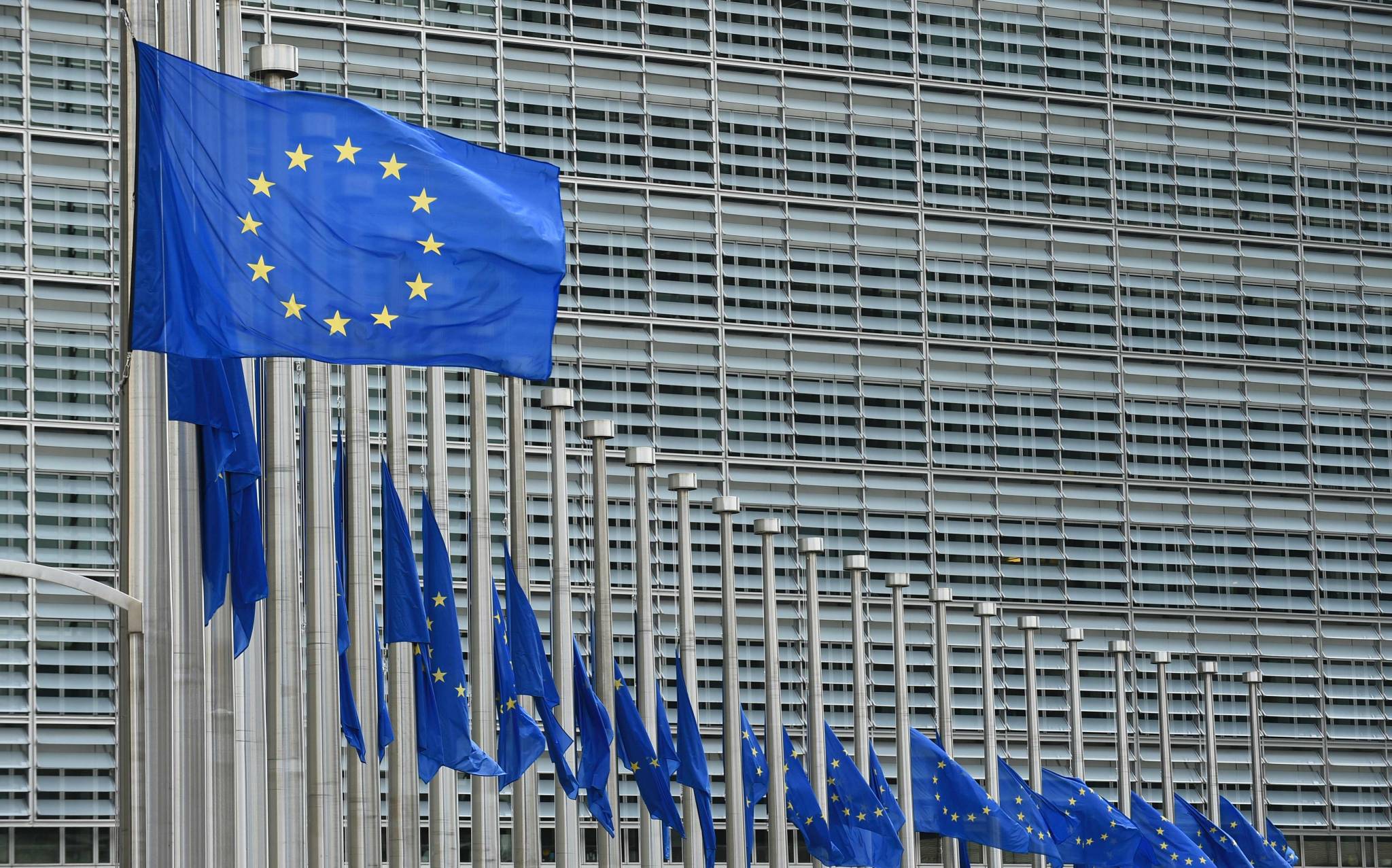After the state and the economy meltdown, the Lebanese are witnessing today the collapse of one of the last founding myths of the second republic: monetary and financial stability, embodied by a Central Bank Governor with superpowers and a giant, but fragile, banking sector.

Over twenty years, the Lebanese have been fooled by the illusion of a stable national currency and a thriving banking sector, totally disconnected from economic fundamentals. Today they are realizing that they have been cheated by officials, who lack all sense of responsibility. Despite official assurances that the exchange rate is stable and there is no capital control, citizens’ incomes in lira have been losing value, their savings in dollars are no longer accessible, and, so far, no one seems to want to manage the crisis.
The first signs of a drying up of dollars appeared well before the uprising of October 17 and the resignation of the government. From the end of August, banks have been refusing requests by importers to open credit lines in foreign currency, which are needed in order to pay their suppliers. With undeclared currency exchange controls, importers were forced to resort to the parallel market and the lira began to depreciate. Very quickly, companies had to increase their prices or reduce their imports; meanwhile, no official took the trouble to explain what was happening to citizens who started panicking at the idea of seeing their national currency float again.
It was not until September 29, after a strike by gas station owners, that the Central Bank issued a circular aimed at providing importers of fuel, medicine and flour with 85% of their foreign exchange needs, leaving them to bear, along with consumers, the cost of the depreciation of the lira on the remaining 15%. The Council of Ministers, meanwhile, was busy thinking of a way to increase its own inflows of currency, and accordingly came up with the infamous WhatsApp tax, that pushed people on the street.
Since the beginning of the uprising, the management of the crisis has been as disastrous. Faced with the prospect of a bank run, the banks found no better solution than to shutter their doors. When they reopened, two weeks later, conditions had changed drastically. Their responses included a lowering of credit ceilings, freezing of banking facilities, limits on withdrawals and, above all, a moratorium on international transfers out of Lebanon. The restrictions have been tight but there have been some exceptions, depending on each bank’s level of liquidity and the client’s influence. The banks have thus become the regulator of economic activity, deciding which company will be able to continue business and which will have to close.
Beginning November, the political class, who refused to take responsibility, entrusted the Governor of the Central Bank, Riad Salameh, with the task of reassuring the public. But his attempt wasn’t met with much success. Denying the existence of de facto capital controls and downplaying the importance of the parallel market, Salameh called on banks to be less "conservative" in managing their dollar liquidity, which he spent years absorbing.
In a context of war in Syria, US sanctions on Hezbollah, political deadlock, rising public deficits, and a declining sovereign rating, the Central Bank stabilized the lira and preserved the purchasing power of the Lebanese, said Salameh while people were demonstrating outside the Central Bank’s headquarters to denounce their deteriorating living conditions. "The Central Bank is not the one that spends, it's the one that finances," he justified as if a creditor who finances at all costs an agent it knows is insolvent shouldn’t share the blame, especially if such actions had a negative impact on the banking sector and the economy as a whole.
How did we get here?
The Central Bank’s policy is not the sole reason for the current crisis. But by maintaining, at a very high price, the illusion of a stable lira, it has allowed Lebanon to live beyond its means, accumulating public and private debts, which now represent more than 365% of the country’s GDP (if we include the Central Bank’s debt towards the banks), of which more than half is denominated in dollars. The problem is not so much the money borrowed from depositors, but what has been done with this money. Instead of investing in infrastructure or development projects to strengthen the economy and boost exports that can generate foreign currency, the state has borrowed money to cover current expenses : civil servant wages, with the use of public sector’s recruitment as a mean to promote political patronage; the payment of interest on debt, to the benefit of depositors and banks, 40% of which are affiliated to politicians; and to cover EDL’s deficit, a further testament to the incompetence of the public authorities. As for private loans, these mainly financed the real estate sector and consumption, and therefore imports.
To put it simply, the fiscal and monetary policies of the last twenty years have resulted in ever-increasing levels of debt, while depriving us the means to repay this debt.
The initial goal was to attract the capital needed to finance reconstruction and restart the economy after 15 years of civil war. In the early 1990s, the banking sector began to finance the Treasury at very high interest rates, allowing them to offer attractive remuneration to their clients in Lebanon and abroad. By collecting dollar deposits, the banks in turn funded the foreign exchange reserves of the Central Bank, giving it the means to defend the lira. But the sectarian regime set up after the Taif Agreement, based on a patronage system and riddled with corruption, soon showed its limitations. The representatives of the various communities dug into the state coffers to finance their own interests without being able to agree on an economic policy, despite the great need for one, especially given the impact of high interest rates on both the real economy and public finances.
A few years later, when the public debt started to spiral out of control, the state went into debt denominated in dollars, with the help of the Central Bank, which committed to keeping the exchange rate at around 1,500 lira to one dollar. This stability allowed investors to generate substantial income, by playing on the interest rate differential between the lira and the dollar without exposing themselves to the exchange risk, and ensured financing at the lowest cost to the state, but to the detriment of the competitiveness of the economy and the productive sectors.
Year after year, the growing deficits of the budget and the balance of goods and services reflected structural imbalances and the inability of the government to cope with it.
On three occasions, Lebanon has found itself on the verge of collapse, in 2001, 2004 and 2007, and each time the international community has come to its aid in return for promises of structural reform, which the political class never fulfilled. The support of the international community nevertheless helped to restore confidence and boost capital inflows.
As long as the balance of payments was in surplus, the Central Bank accumulated foreign exchange reserves, the lira remained stable, and Lebanon continued to borrow. The system was all the more effective as unemployment and the deterioration of living conditions drove the Lebanese to emigrate, and thus transfer remittances from abroad.
But fundamentally, the level of liquidities in the region is related to oil prices. Soaring crude oil in the years 2007-2010 resulted in record inflows of capital which, since they were not channelled to the productive sectors, created a real estate bubble.
Conversely, when oil prices fell, as of 2011, inflows to Lebanon began to dry up, and the real estate market collapsed, despite the Central Bank’s attempts to support demand through subsidized loans.
The slowdown in capital inflows became more problematic as the Lebanese economy was hit hard by the consequences of the war in Syria and the influx of over one million refugees. The political class, entangled in its contradictions and its geopolitical alignments, was unable to cushion the impact of the shock on public finances and on the economy. Thus, the Syrian crisis led to a worsening of the twin deficits and increased funding needs, as liquidity became scarce. The balance of payments then fell into the red, generating pressure on the exchange rate.
Financial engineering
In the absence of political action, in 2016, foreign exchange reserves reached a critical threshold, undermining confidence in the lira and threatening the funding model. At this stage, the social cost of depreciation had already become too high given the country's dependence on imports and the dollarization of private debt.
The Central Bank accelerated its attempt to escape forward by undertaking its famous financial engineering operations, which allowed it to boost its reserves by offering banks incredible returns in exchange for their cash in dollars. These returns in turn allowed the banks to attract new deposits. A portion of the generated profits also helped strengthen the sector's capitalization in an increasingly difficult economic context. After the "resignation" of Saad Hariri in 2017, these engineering policies were implemented again, as the state became desperate for dollars as it was deprived of its access to international markets following the degradation of its sovereign rating. At the same time, the Central Bank was then forced to draw on its reserves which were already under pressure, to repay maturing Eurobonds.
In 2018, Lebanon again turned to the international community. However, unable to meet the political conditions stipulated by the Gulf countries, it had to resort to European and international organizations to obtain aid in the form of financing for infrastructure projects, conditioned by ambitious reforms. But once again, the political class has been unable to fulfil its commitments. Instead of lowering the public deficit by 1% of GDP as promised, the deficit increased from 9 to 11% of GDP, which can be attributed to the politician’s efforts to win in the elections. As for structural reforms, including the most urgent such as those concerning the electricity sector, they remained hostage of the political and financial haggling that has become a speciality of the Lebanese political class.
The little confidence that remained in the system evaporated and the bleeding began, despite the Central Bank’s persistent financial engineering and its enticing promises. Over the first nine months of the year, deposits in the banking sector were already down (including interest) by about $4 billion year-on-year, reaching $170.3 billion at the end of September, with a dollarization rate of 72.9%. In a study published on November 19, the association of the world's largest banks and financial institutions, the Institute of International Finance (IIF) said that deposits had declined by more than $10 billion since the end of August, of which $5 billion were transferred abroad.
Having placed almost all their cash with the Central Bank, and keeping about $9.8 billion abroad, the banks chose to ration the dollars on the local market on a case-by-case basis.
According to a report by Bank of America Merrill Lynch released on November 25, the banks hold $84.3 billion with the Central Bank, including $19.8bn of Reserve Requirements (RRRs) with an estimated interest of 3-month Libor paid on them, $22.7 billion Certificate of Deposits (CDs) in USD remunerated at 6.6% and 41.8 billion of excess deposits at 5.94% (representing an interest expense for the Central Bank of $4.6 billion per year). But these investments have longer maturities than bank deposits in dollars, especially those of non-residents. The last resort lender, the Central Bank, with only $30 billion in liquid reserves, offered banks loans in dollars at a rate of 20%, provided that the money does not leave Lebanon, thus establishing informal capital controls. This measure, imposed in an entirely discretionary manner, allows the banks and the Central Bank to buy time at the cost of a sharp contraction of the economy.
Now what?
According to the Bank of America Merrill Lynch, the Central Bank’s reserves have dipped by $900 million just one week after the re-opening of the banks in November. Even if this rate is cut in half under strict capital controls, in the current state of things, the reserves will be exhausted during 2020. If the request for dollars is reduced by two thirds, the Central Bank will finish the year with reserves of just over $7 billion.
These reserves are crucial. In a worst-case scenario, if nothing is done within a few months, the evaporation of the reserves will cause not only a socially devastating devaluation of the Lira, but also a default on the state and the Central Bank’s dollar debt. Given banks’ high exposure to the public sector, and particularly to the Central Bank, a 20% recovery rate on the nominal value of the dollar debt will lead to a recapitalization need of $80 billion, with a potential haircut of 50% on all deposits, or close to 99% if only deposits over $1 million are involved. In this scenario, there will be no possibility for arbitration.
By refusing to regulate capital controls, officials are continuing their wishful thinking that this crisis, like others, will go away with some engineering, cosmetic reforms, some austerity and capital inflows from the Gulf, persisting to maintain a policy that Lebanon cannot afford. The crisis of confidence, however, seems more profound, and it is unlikely that the banking sector will, in the short term, again attract the inflow of deposits needed to keep the country afloat. In its report Bank of America Merrill Lynch estimates that Lebanon will need at least $8 billion a year, over the next three years, to fill its financing needs gap. Some analysts are advocating the selling of existing or future government assets (gas), which, given the current crisis and widespread corruption, may be sold to parties close to the political class.
Is a soft landing still possible? It is difficult to say as given the total lack of transparency regarding the real financial situation of the Lebanese state and its Central Bank.
A soft landing will undoubtedly depend on Lebanon's ability to mobilize fast and well negotiated financing. Whether with the help of the International Monetary Fund or others, an adjustment seems unavoidable, but its cost must be equitably distributed, based on an economic and social approach, not just a financial one.
The decline in interest rates on deposits recently declared by the Central Bank, for example, may be considered unfair by many savers, especially retirees, who live off these incomes. Which party should be the arbitrator? On what basis? What national vision could justify these sacrifices? With a credible, competent and effective government, meaning a government unlike those of the last thirty years, the fall would certainly be less painful.
But for the moment, the Central Bank is alone in command. Its Governor has assured that there will be no haircut on deposits or a devaluation, but he also said that the Lira was stable and that there was no capital control. We are therefore entitled to doubt.
This article was originally published in French.







